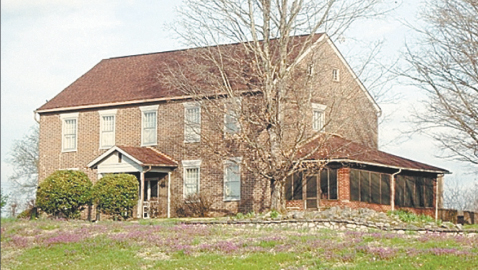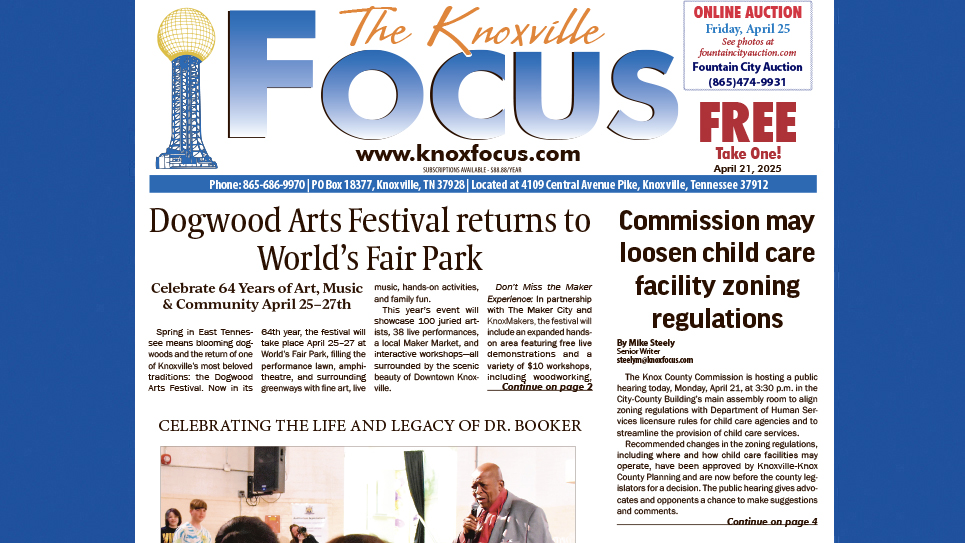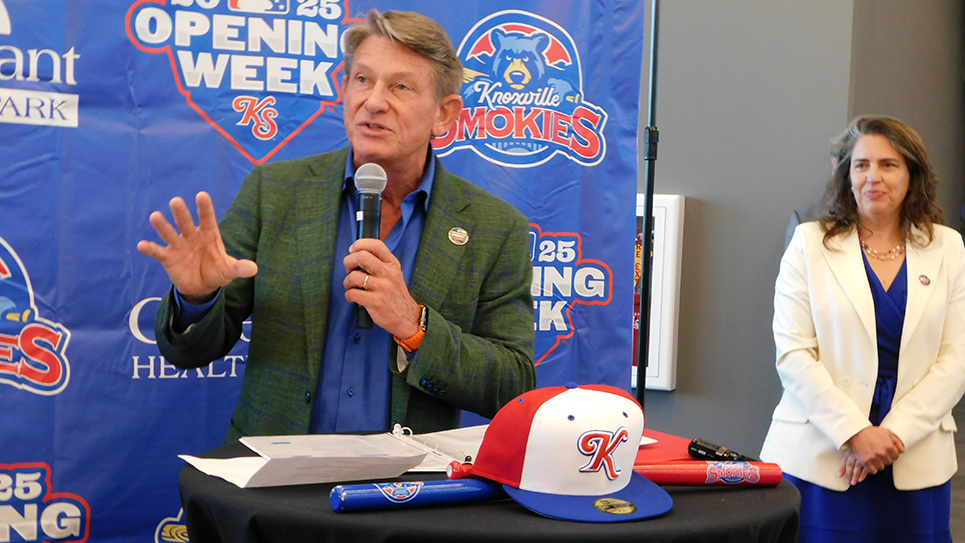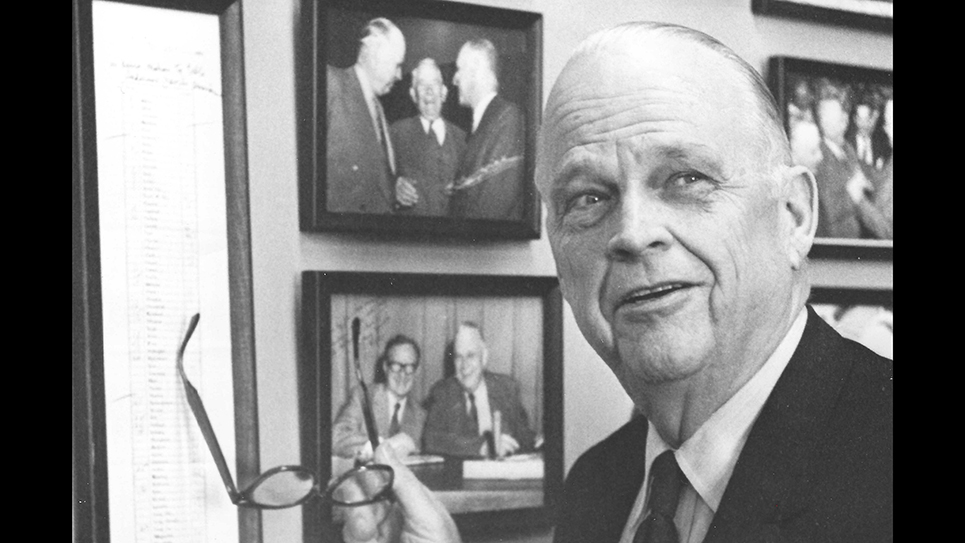
Photo by Mike Steely
The Campbell Station Inn, built by one of founders of the settlement that would become Farragut.
By Mike Steely
steelym@knoxfocus.com
It’s the little town with a lot of muscle, the western end of Knox County that has lured newcomers and professionals alike, the shopping and commercial heart of suburbia, and the little engine that could.
Farragut did not exist as an incorporated municipality until 1980. It avoided the sweeping annexation of a growing Knoxville by becoming Knox County’s second city. Today the town boasts of more than 20,000 residents within its 16 square miles of area. There are more than 6,500 households of which more than 70% are families with a higher medium income than most of the county.
While most local people think that all of the Turkey Creek shopping area is in Farragut, much of it is actually in Knoxville. The eastern end of Turkey Creek is in Knoxville and the middle and western end are in Farragut. The town stretches down Kingston Pike from about Lovell Road down to the Loudon County line at Dixie Lee Junction. The northern boundary actually goes across I-40 and the southern boundary reaches down to Fort Loudon Lake. What it does not encompass is its much older community to the south, Concord.
Although later named for Civil War Navy Admiral David Farragut, the community could have easily kept the name Campbell’s Station, for the family of Captain David Campbell who settled there before statehood. The founder established a large fortified home, a stage coach stop, and an inn. The home was built in 1787 and stands yet today on 11409 Kingston Pike. The Pleasant Hill Cemetery in Farragut has a marker for Campbell, but it is only a memorial as Campbell moved further west in Tennessee later in his life. The cemetery does have Campbell family members buried there and also has the grave of Tennessee’s second governor, Archibald Roane.
The Campbell Station Inn
Andrew Jackson slept there and so did John Sevier and many other early Tennessee and national figures. The Russell House, or Campbell Station Inn, was built in 1810 and has been acquired by the town of Farragut. It’s on the National Register of Historic Sites and, according to Farragut’s mayor, is one of the last remaining connections to the area’s historic past. A campaign is underway to raise $ 1 million to restore the old home.
Farragut, then Campbell’s Station, was the site of the Battle of Campbell Station during the Civil War.
Before and after that national conflict the area of Farragut was the main route for travelers, pioneers, politicians, and commerce going west. The wagon road led through the community to southwest Point (Kingston) and on across the Cumberland Mountains to Nashville and beyond.
The Farragut Folklife Museum
Located inside the town hall, the Folklife Museum tells the story of the settlement of the area, from pioneer days until today. Many of the exhibits honor Admiral Farragut and the volunteers at the museum are happy to greet you and show you around the free exhibits.
The displays, uniforms, photos, artifacts and even a collection of scrimshaw are featured along with exhibits about the Civil War, local schools, and much more. There’s a gift shop featuring historic books, children’s toys, and handmade items from local crafts people.
The current special exhibit is “The Manhattan Project: Secrets Revisited,” featuring items on loan from the American Museum of Science and Energy, Y-12 National Security Complex K-25, and the collection of Lloyd and Betty Stokes.
You can contact the museum at 966-7057 or find them on the internet at www.townof farragut.org and select the museum.
Art In The Park
The town is home to the Farragut-West Knox Chamber of Commerce which takes an active role in the community. It is also the home of the Farragut Business Alliance. The Alliance has partnered with the town and the Dogwood Arts Festival to host the 4th annual Farragut Art in the Park, presented by TDS. The event this year will be Saturday and Sunday, April 26 and 27 at Campbell Station Park.
Paintings and photographs of various parks, greenways and other scenic Farragut locations will be featured. Kid’s Art in the Park will be held that Saturday from 1-3 p.m. where children can participate in hands-on art projects.
The events are free and open to the public and you can get more information by calling 307-2486 or going to www.FarragutBusiness.com.
Parks and Greenways
Several parks and greenways exist in Farragut including Anchor Park, Founders Park at Campbell Station, Mayor Bob Leonard Park, McFee Park, and greenways at Fox Fun, Grigsby Chapel, McFee, Parkside and Turkey Creek.
Founders Park is unique in that it circles back to the Knox County Library with walking trails, sculptures, benches, a Longstreet Pavilion and a Burnside Pavilion (the two opposing Generals in the Battle of Campbell Station.)
Bob Leonard Park, on Watts Road, is primarily athletic fields with walking trails and playgrounds. It is named in honor of Farragut’s first mayor.
Farragut today
The town of Farragut holds elections August 7th. The council is elected in a non-partisan race and serves with three term limits. The current mayor, Ralph McGill, is unopposed.
Residents of Farragut pay no property tax, but as residents of Knox County they do pay county property taxes. Utilities in Farragut are supplied by the First Utility District for water and sewer, the Knoxville Utilities Board for gas, and the Lenoir City Utility Board for electric.
Revenue for the town comes from local sales taxes and the explosion of businesses at Turkey Creek and along Kingston Pike has benefited Farragut greatly.
Law enforcement is provided by the Knox County Sheriff’s Department. There are about 8,000 households with a median age for residents at 45 years.
The Farragut-West Knox Chamber of Commerce and the Farragut Business Alliance serve the town and the western end of our county.
CONCORD
The village of Concord began about 1854 and boomed because of the East Tennessee and Georgia Railroad that passed through the community on the north bank of the Tennessee River. By the 1880’s Concord became the center of the marble industry thanks to nearby quarries. A ferry there linked both sides of the river.
During the Civil War Concord was pro-Union and the site of two Union camps.
The flooding of Fort Loudon Lake covered much of the marble works and buildings. What you see today are those buildings built later or above the waterline.
By the end of the 1880s Concord had grown to become the second largest community in the county. It had a brick yard, general stores, a railroad hub and depot, livery stables, a school, bank and drug store. Today Concord is a residential community with one main downtown area facing the railroad and the lake. One third of the town was covered by lake waters, mostly the old downtown.
Concord is now a historic little village with many residents working in Farragut or Knoxville.





